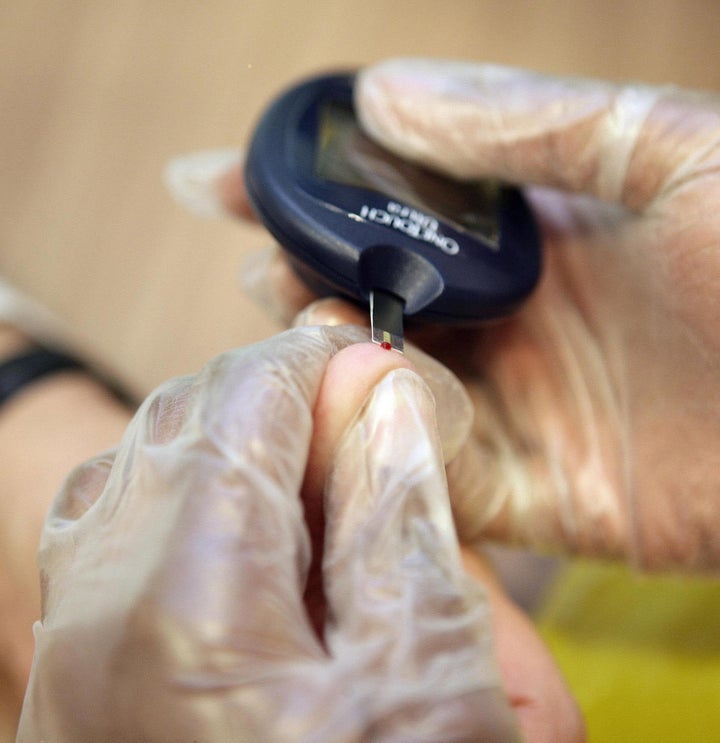
A silent killer is stalking the developing world, from Johannesburg to New Delhi, and Beijing to Mexico.
Unlike many health scares in the news, diabetes is not some new strain of influenza or a recently discovered mystery disease; it is a scourge as familiar to the United States as it is to the developing world.
Diabetes is one of the most serious public health problems facing the world today and the predictions are dire -- the International Diabetes Federation warns that, without intervention, 552 million people will have diabetes by 2030 and 398 million will be at risk of developing it.
But today, on World Diabetes Day, there is good news: Type 2 diabetes is preventable, and we can stop it from affecting even more around the world. The answer is as clear as the potential toll is severe -- health education.
We must teach people, especially the young, that making a few high-impact lifestyle choices now will help them avoid the onset of diabetes later on. These relatively small behavioral changes have proven to be remarkably effective.
I was struck by the huge health needs in Johannesburg on my trip there a few weeks ago. But I was also inspired by the stirrings of change.
In the low-income township of Zandspruit, I saw people eager to use new tools to lower their blood pressure and to talk about their health needs. They wanted to learn about how they could build stronger families.
Diabetes educators at the HOPE Center, a partnership between Project HOPE and Eli Lilly and Company, are pioneering new ways to help families in some of South Africa's most vulnerable communities tackle diabetes and high blood pressure. Preventive screening at the HOPE Center and other state-of-the-art diagnosis and treatment services offer hope to this community of ramshackle houses.
There has never been a greater need for health educators to penetrate deep into communities in rural areas of the developing world to teach prevention and disease management.
The irony is that formerly impoverished communities that have become more prosperous are now more at risk for chronic diseases that typically affect areas with more resources. As rural communities shift their diets from healthy foods produced in an agricultural economy to more modern, processed foods high in fat and salt, the local residents are more likely to face the dangers of diabetes and heart disease. Just look at sub-Saharan Africa, where diabetes was once rare. Today, the region has an estimated 12 million people afflicted with the disease.
Project HOPE's battle against diabetes began in 1998 in China, where today it's estimated that more than 92 million people have diabetes and another 148 million have pre-diabetes, meaning they are at high risk of developing Type 2 diabetes.
But no other NGO carries out diabetes education beyond the diagnosis, treatment and patient care in Chinese hospitals. Project HOPE works closely with local health officials in communities throughout the country to make people aware of the risks.
Applying the "teach a man to fish" philosophy, the program connects more than 800 local hospitals and community health centers with Project HOPE's diabetes training centers, educating more than 40,000 health care providers and reaching 223,000 patients and their families.
In India, our educators are making inroads with many thousands of people who are unaware of their condition or how to manage it. The downside of India's burgeoning economic prosperity is a society where 61 million people struggle with diabetes even as the nation pursues the fast track of economic development. Project HOPE's India Diabetes Educator Project has trained more than 3,000 health professionals, including nurses, nutritionists and physical therapists to encourage healthy lifestyles.
We also are harnessing the power of technology to spread the prevention education message. We are partnering with the Cornerstone OnDemand Foundation and the Takeda Pharmaceutical Company Ltd. to create a new online diabetes educator course known as the International Diabetes Educator E-Learning Program that could reach many health care providers for years to come. With more than 61 million diabetics and over 77 million people with pre-diabetes in India, we must find new ways to slow the growth of Type 2 diabetes.
We cannot simply treat the symptoms of a disease and expect it to go away. By giving communities the means and knowledge to help themselves, we can save and enhance millions of lives.